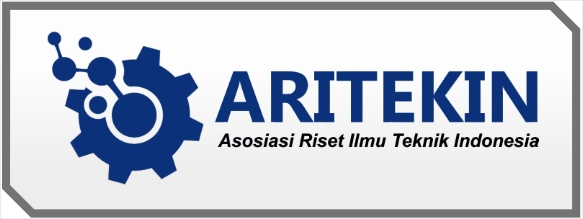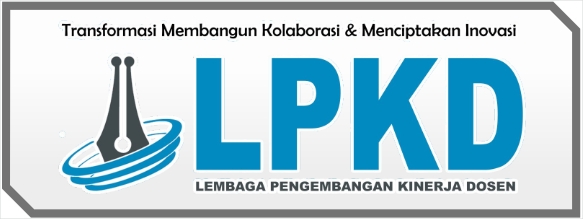EXPLORATION OF AMPLITUDE CODING CAPACITIES FOR Q-ML MODEL
DOI:
https://doi.org/10.55606/jeei.v2i3.916Keywords:
Machine Learning, Amplitude Coding, Quantum Machine Learning, Quantum Computation, TensorFlow QuantumAbstract
Quantum computing implements computation adopting environmental phantasm and the foundation of quantum mechanics to clear up the issues. This design of calculation has been demonstrated to serve the acceleration of some modern processing issues. Current evolution in quantum technology is emerging, and the application of learning design to this current instrument is developing. With enough prospects, the application of quantum development in the area of Machine Learning has come clear.
This research develops a TensorFlow Quantum (TF-Q) software framework model for machine learning functions. The two models advanced the application of material coding techniques from amplitude coding to constructing a case in the quantum learning model. This study aimed to explore the scope of amplitude coding to serve enhanced case establishment in learning techniques and in-depth investigation of data sets that bring insight into the practice data adopting the “Variational Quantum Classifier” (VQ-C). The emergence of this current method raises the investigation of how best this tool can be adopted, the aim is to provide several analysis explanations for the element of quantum machine learning that can be applied given the constraints of the actual device.
The results of this study indicate there are clear advantages to adopting amplitude coding over another technique as demonstrated by adopting the combination of quantum-humanistic neural networks in TF-Q. In addition, the different preprocessing steps can generate more aspect-affluent data while using VQ-C the no-charge lunch assumption dominance for quantum learning technique for humanistic models. The material even though conceal in quantum by unadvanced data preparation steps but involves new ways of understanding and appreciating these new methods. Future studies will lack expansion into multi-type of analysis models that are sufficiently advanced to be relevant in work similar to this.
References
Benioff, Paul. "The computer as a physical system: A microscopic quantum mechanical Hamiltonian model of computers as represented by Turing machines." Journal of statistical physics 22, no. 5 (1980): 563-591.
Berthiaume, André, and Gilles Brassard. "Oracle quantum computing." Journal of modern optics 41, no. 12 (1994): 2521-2535.
Boneh, Dan, Özgür Dagdelen, Marc Fischlin, Anja Lehmann, Christian Schaffner, and Mark Zhandry. "Random oracles in a quantum world." In International Conference on the Theory and Application of Cryptology and Information Security, pp. 41-69. Springer, Berlin, Heidelberg, 2011.
Britt, Keith A., and Travis S. Humble. “High-performance computing with quantum processing units.” ACM Journal on Emerging Technologies in Computing Systems (JETC) 13, no. 3 (2017): 1-13.
Caruana, Rich, and Alexandru Niculescu-Mizil. "An empirical comparison of supervised learning algorithms." In Proceedings of the 23rd international conference on Machine learning, pp. 161-168. 2006.
Chawla, Nitesh V., Kevin W. Bowyer, Lawrence O. Hall, and W. Philip Kegelmeyer. "SMOTE: synthetic minority over-sampling technique." Journal of artificial intelligence research 16 (2002): 321-357.
Cortes, Corinna, and Vladimir Vapnik. "Support-vector networks." Machine learning 20, no. 3 (1995): 273-297.
Cory, David G., Amr F. Fahmy, and Timothy F. Havel. "Ensemble quantum computing by NMR spectroscopy." Proceedings of the National Academy of Sciences 94, no. 5 (1997): 1634-1639.
Cybenko, George. "Approximation by superpositions of a sigmoidal function." Mathematics of control, signals and systems 2, no. 4 (1989): 303-314.
Deutsch, David, and Richard Jozsa. "Rapid solution of problems by quantum computation." Proceedings of the Royal Society of London. Series A: Mathematical and Physical Sciences 439, no. 1907 (1992): 553-558.
Ge, Rong, Furong Huang, Chi Jin, and Yang Yuan. "Escaping from saddle points— online stochastic gradient for tensor decomposition." In Conference on Learning Theory, pp. 797-842. 2015.
Goodfellow, Ian, Yoshua Bengio, Aaron Courville, and Yoshua Bengio. Deep learning. Vol. 1, no. 2. Cambridge: MIT press, 2016.
Hunter, John D. "Matplotlib: A 2D graphics environment." Computing in science & engineering 9, no. 3 (2007): 90-95.
Kantardzic, Mehmed. Data mining: concepts, models, methods, and algorithms. John Wiley & Sons, 2011.
Knill, Emanuel, Raymond Laflamme, Rudy Martinez, and Camille Negrevergne. "Benchmarking quantum computers: the five-qubit error correcting code." Physical Review Letters 86, no. 25 (2001): 5811.
Kubat, Miroslav, and Stan Matwin. "Addressing the curse of imbalanced training sets: one-sided selection." In Icml, vol. 97, pp. 179-186. 1997.
LeCun, Yann, Yoshua Bengio, and Geoffrey Hinton. "Deep learning." nature 521, no. 7553 (2015): 436-444.
Lloyd, Seth, Masoud Mohseni, and Patrick Rebentrost. "Quantum principal component analysis." Nature Physics 10, no. 9 (2014): 631-633.
MacKay, David JC. "Hyperparameters: optimize, or integrate out?." In Maximum entropy and bayesian methods, pp. 43-59. Springer, Dordrecht, 1996.
MacQueen, James. "Some methods for classification and analysis of multivariate observations." In Proceedings of the fifth Berkeley symposium on mathematical statistics and probability, vol. 1, no. 14, pp. 281-297. 1967.
Makhlin, Yuriy, Gerd Scöhn, and Alexander Shnirman. "Josephson-junction qubits with controlled couplings." nature 398, no. 6725 (1999): 305-307.
Montanaro, Ashley. "Quantum algorithms: an overview." npj Quantum Information 2, no. 1 (2016): 1-8.
Nair, Vinod, and Geoffrey E. Hinton. "Rectified linear units improve restricted boltzmann machines." In ICML. 2010.
Nielsen, Michael A., and Isaac Chuang. "Quantum computation and quantum information." (2002): 558-559.
Patra, Bishnu, Rosario M. Incandela, Jeroen PG Van Dijk, Harald AR Homulle, Lin Song, Mina Shahmohammadi, Robert Bogdan Staszewski et al. "Cryo-CMOS circuits and systems for quantum computing applications." IEEE Journal of Solid- State Circuits 53, no. 1 (2017): 309-321.
Pedregosa, Fabian, Gaël Varoquaux, Alexandre Gramfort, Vincent Michel, Bertrand Thirion, Olivier Grisel, Mathieu Blondel et al. "Scikit-learn: Machine learning in Python." the Journal of machine Learning research 12 (2011): 2825-2830.
Preskill, John. "Reliable quantum computers." Proceedings of the Royal Society of London. Series A: Mathematical, Physical and Engineering Sciences 454, no. 1969 (1998): 385-410.
Rebentrost, Patrick, Masoud Mohseni, and Seth Lloyd. "Quantum support vector machine for big data classification." Physical review letters 113, no. 13 (2014): 130503.
Rebentrost, Patrick, Masoud Mohseni, and Seth Lloyd. "Quantum support vector machine for big data classification." Physical review letters 113, no. 13 (2014): 130503.
Robbins, Herbert, and Sutton Monro. "A stochastic approximation method." The annals of mathematical statistics (1951): 400-407.
Shor, Peter W. "Algorithms for quantum computation: discrete logarithms and factoring." In Proceedings 35th annual symposium on foundations of computer science, pp. 124-134. Ieee, 1994.
Srivastava, Nitish, Geoffrey Hinton, Alex Krizhevsky, Ilya Sutskever, and Ruslan Salakhutdinov. "Dropout: a simple way to prevent neural networks from overfitting." The journal of machine learning research 15, no. 1 (2014): 1929- 1958.
Wold, Svante, Kim Esbensen, and Paul Geladi. "Principal component analysis." Chemometrics and intelligent laboratory systems 2, no. 1-3 (1987): 37-52.
Xiao, Jing, YuPing Yan, Jun Zhang, and Yong Tang. "A quantum-inspired genetic algorithm for k-means clustering." Expert Systems with Applications 37, no. 7 (2010): 4966-4973.
Xu, Rui, and Donald Wunsch. "Survey of clustering algorithms." IEEE Transactions on neural networks 16, no. 3 (2005): 645-678.
Zeng, William, and Bob Coecke. "Quantum algorithms for compositional natural language processing." arXiv preprint arXiv:1608.01406 (2016).
Zhu, Xiaojin Jerry. Semi-supervised learning literature survey. University of Wisconsin- Madison Department of Computer Sciences, 2005.



.png)
.png)










